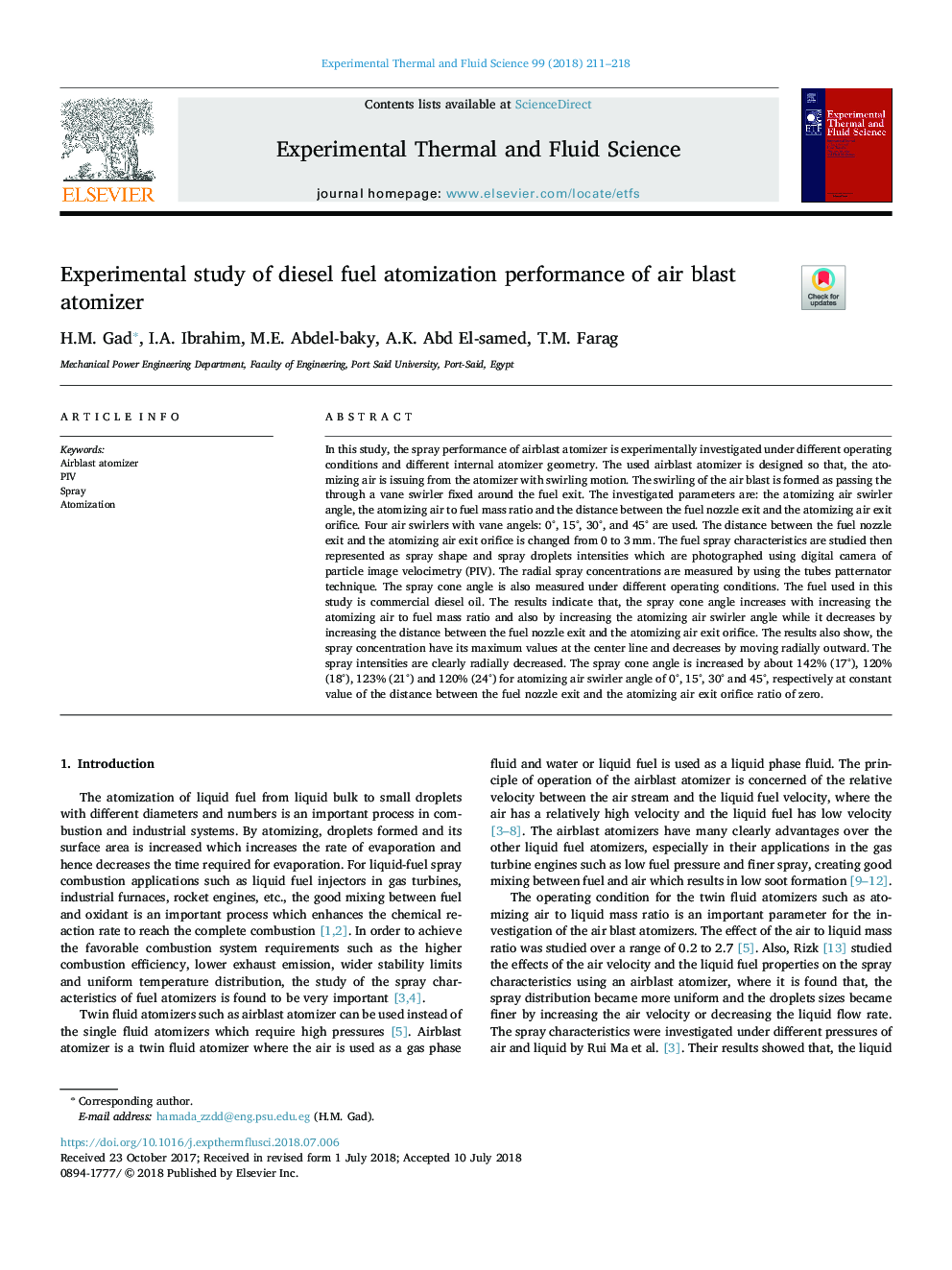| Article ID | Journal | Published Year | Pages | File Type |
|---|---|---|---|---|
| 7051453 | Experimental Thermal and Fluid Science | 2018 | 8 Pages |
Abstract
In this study, the spray performance of airblast atomizer is experimentally investigated under different operating conditions and different internal atomizer geometry. The used airblast atomizer is designed so that, the atomizing air is issuing from the atomizer with swirling motion. The swirling of the air blast is formed as passing the through a vane swirler fixed around the fuel exit. The investigated parameters are: the atomizing air swirler angle, the atomizing air to fuel mass ratio and the distance between the fuel nozzle exit and the atomizing air exit orifice. Four air swirlers with vane angels: 0°, 15°, 30°, and 45° are used. The distance between the fuel nozzle exit and the atomizing air exit orifice is changed from 0 to 3â¯mm. The fuel spray characteristics are studied then represented as spray shape and spray droplets intensities which are photographed using digital camera of particle image velocimetry (PIV). The radial spray concentrations are measured by using the tubes patternator technique. The spray cone angle is also measured under different operating conditions. The fuel used in this study is commercial diesel oil. The results indicate that, the spray cone angle increases with increasing the atomizing air to fuel mass ratio and also by increasing the atomizing air swirler angle while it decreases by increasing the distance between the fuel nozzle exit and the atomizing air exit orifice. The results also show, the spray concentration have its maximum values at the center line and decreases by moving radially outward. The spray intensities are clearly radially decreased. The spray cone angle is increased by about 142% (17°), 120% (18°), 123% (21°) and 120% (24°) for atomizing air swirler angle of 0°, 15°, 30° and 45°, respectively at constant value of the distance between the fuel nozzle exit and the atomizing air exit orifice ratio of zero.
Keywords
Related Topics
Physical Sciences and Engineering
Chemical Engineering
Fluid Flow and Transfer Processes
Authors
H.M. Gad, I.A. Ibrahim, M.E. Abdel-baky, A.K. Abd El-samed, T.M. Farag,
